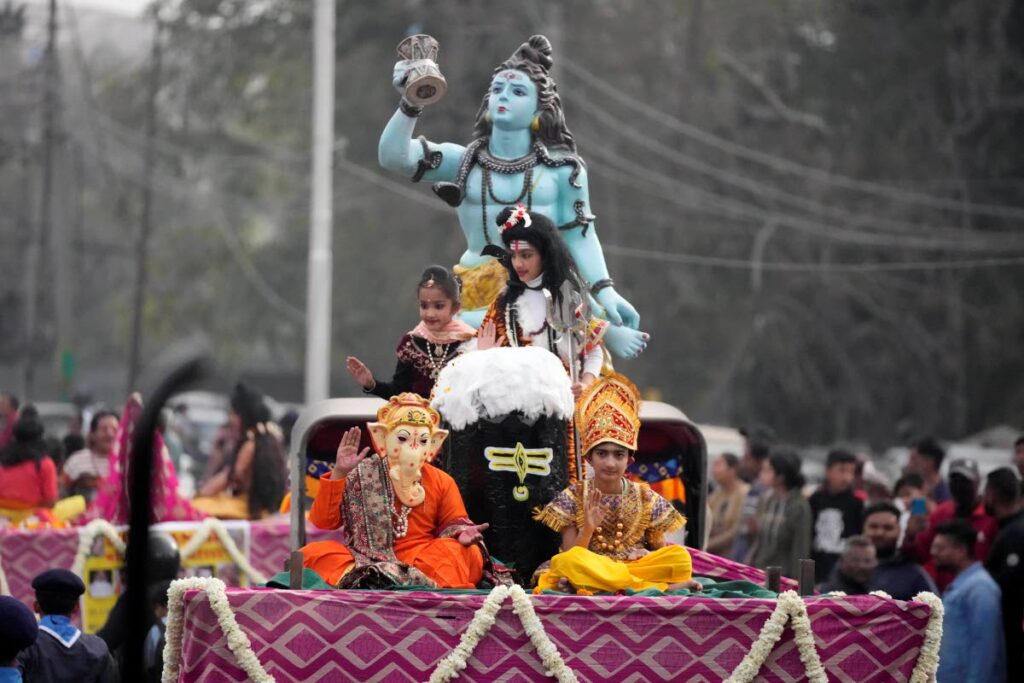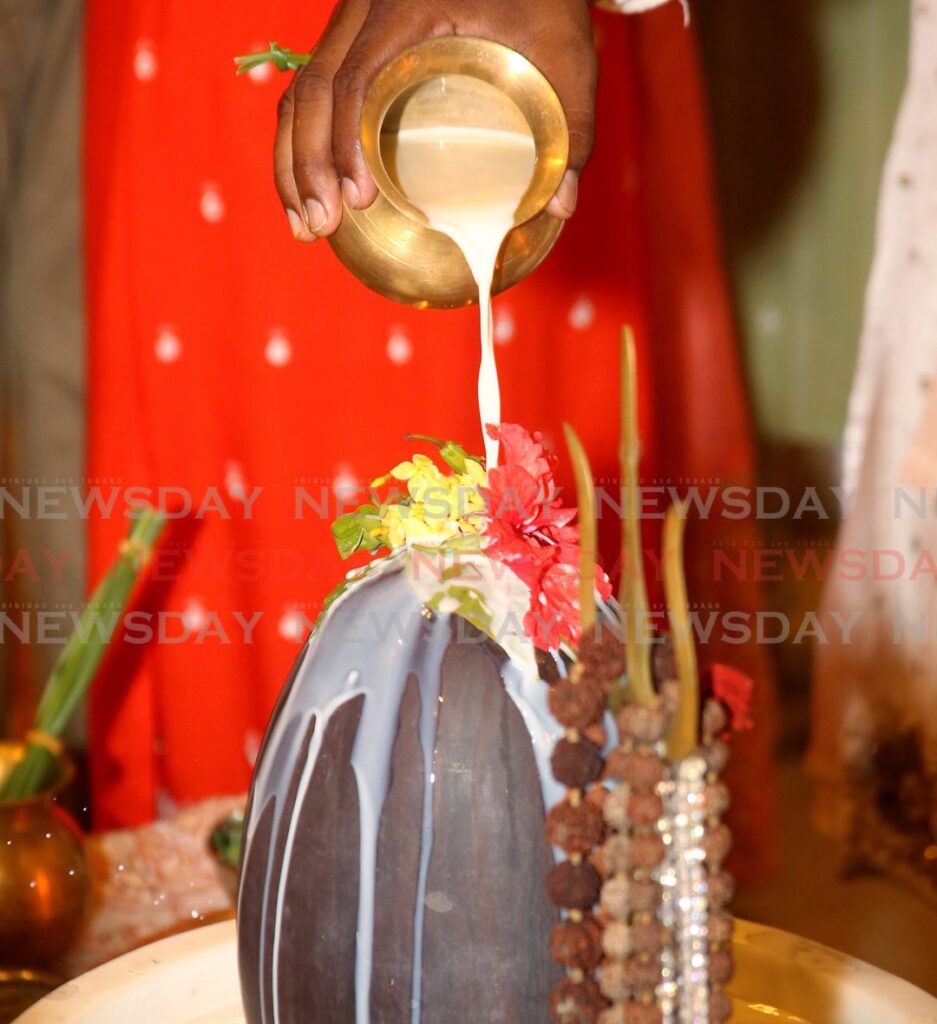Grand event for Maha Shivratri

BAVINA SOOKDEO
On Maha Shivratri, Neval Chatelal and others will perform at the Ramjit and Basso Persad Hindu Temple. To be held on Saturday, the event will begin at 6 pm at the feet of the temple’s 40-foot Lord Shiva statue at Mohepath Trace, St Helena.
Devotees of Lord Shiva are invited to make their offerings on the crystal lingam (an object, usually made out of stone, representing Lord Shiva) while being treated to bhajans (Hindu devotional songs) from Ravi Jagroop, Neval Chatelal, Kavesh the Band and more. The Wasafoli African Drummers and Rana Mohip and Band will also perform for the all-night vigil which consists of four pahars (parts).

Maha Shivratri, dedicated to Lord Shiva, is celebrated on the 13th lunar night into the 14th day during the Hindu month of Phagun. Lord Shiva is known to be the destroyer of the universe but he destroys to recreate.
In an interview with Newsday, Sadhvi Anandamaiyee Giri, general secretary of Brahma Vidya Peetham International, said, “In Sanskrit, Shiva means auspicious one. He is the remover of negativity and the transformer of the negative into goodness. According to Hinduism, the highest form of Shiv is formless, limitless, and transcendental. He is the unchanging absolute who lives an ascetic life on Mount Kailash. The creative power of Lord Shiva is Ma Parvati. His two children are Ganesh and Karthikeya. Ganesh symbolises wisdom and remover of all obstacles and problems from life. Karthikeya is a symbol of power, energy and courageous force in the protection of humanity. Shankar is the first yogi of this creation, teacher of yoga and meditation.”
The swami explained that Lord Shiva has many names and is also known by the name Rudra (god of roaring storm). “Rudra and Agni (fire) have a close relationship so Lord Shiva has the third eye in his forehead symbolising the fire and heat of his divine practice” she explained. “As a great scientist he invented all yoga systems, all rules and regulations of householder life and as a great scholar he gave the light of various books of wisdom. He prepared the Sanskrit language, all techniques of dance and many musical instruments.”
The swami then explained Lord Shiva’s form.
His third eye symbolises fire and burns all desires (Kama) to ashes.
He bears the crescent moon on his head. Due to this, he is referred to in Sanskrit as Chandra Shekar. His body is smeared with ashes serving as a reminder that all of material existence is impermanent and at last becoming ash.
His jata (matted hair) symbolises the ability to control and solve problems by his own head.
The Ganga flowing from atop his head symbolises coolness and bhakti (devotion).
Referred to as Neel Kanth (blue-throated) because he drank the poison (halahal) for the protection and welfare of the entire world, he has a great mountainous personality and is one who can absorb, receive and take care of all the problems of the society but in fact remains unperturbed and undisturbed by it. He is a personality of tranquillity and deep peace had that ability hence he digested the poison and held it in his throat so neither did it enter and create an effect within him nor was it allowed to go out and disturb the flow of the infrastructure and intra structure of the society.

He is always in meditation pose in connecting to his inner power. Seated on the tiger skin depicting his detachment from this material world with serpents around him – no fear of death.
The trishul (trident) stands powerfully with him removing the three types of suffering physical, mental and spiritual.
He holds the damaru – emanating the sounds of creation of this universe – and dances the natraj reminding us that life should be enjoyable.
The rudraksha mala is a symbol of a mendicant and meditative life.
Nandi (the bull) is his vehicle – a symbol of dharma, so Bhagwan Shankar is firmly anchored to dharma at all times. It also symbolises that he is the ruler of all animals – the lord of animals hence the term Pashupati Nath.
Mount Kailash is his place of abode and represents the centre of the universe.
The event promises to be one that is energetic, entertaining and full of positive vibrations.
For more info:visit the Ramjit and Basso Persad Hindu Temple’s Facebook page.

Comments
"Grand event for Maha Shivratri"